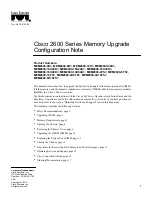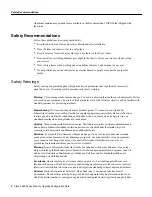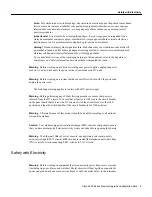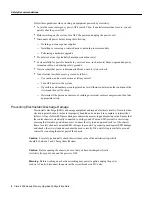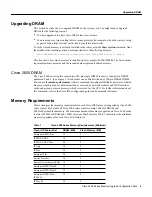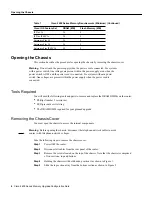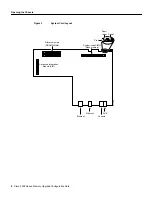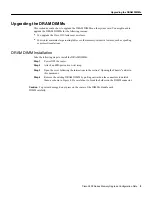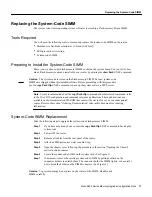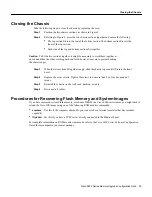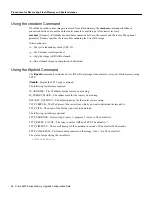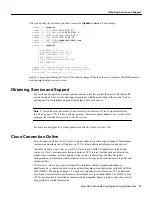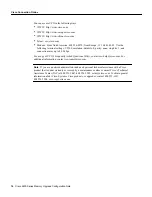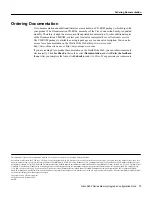
14 Cisco 2600 Series Memory Upgrade Configuration Note
Procedures for Recovering Flash Memory and System Images
Using the xmodem Command
If both the boot and system images are erased from Flash memory, the xmodem command establishes a
connection between a console and the router console or auxiliary port for disaster recovery.
xmodem [filename]—Establishes an xmodem connection between the console and the router. The optional
parameter filename specifies the source file containing the Cisco IOS image.
Other options are:
-c—Use cyclic redundancy check (CRC-16).
-y—Use Ymodem transfer protocol.
-r—Copy the image to DRAM for launch.
-x—Do not launch image on completion of download.
Using the tftpdnld Command
The tftpdnld command downloads a Cisco IOS software image from a remote server into Flash memory using
TFTP.
tftpdnld—Begins the TFTP copy command.
The following variables are required:
IP_ADDRESS—The IP address for the router you are using.
IP_SUBNET_MASK—The subnet mask for the router you are using.
DEFAULT_GATEWAY—The default gateway for the router you are using.
TFTP_SERVER—The IP address of the server from which you want to download the image file.
TFTP_FILE—The name of the file that you want to download.
The following variables are optional:
TFTP_VERBOSE—Print setting. 0=quiet, 1=progress, 2=verbose. The default is 1.
TFTP_RETRY_COUNT—The retry count for ARP and TFTP. The default is 7.
TFTP_TIMEOUT—The overall timeout of the operation in seconds. The default is 2400 seconds.
TFTP_CHECKSUM—Performs a checksum test on the image. 0=no 1=yes The default is 1.
The syntax for specifying the variables is:
VARIABLE_NAME=value

